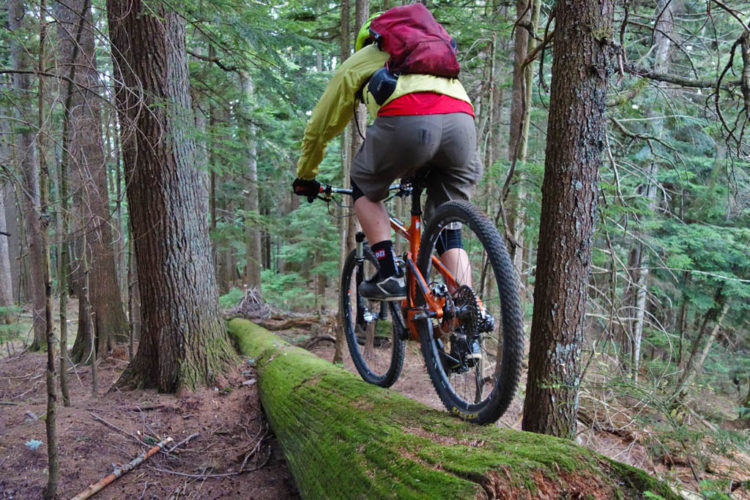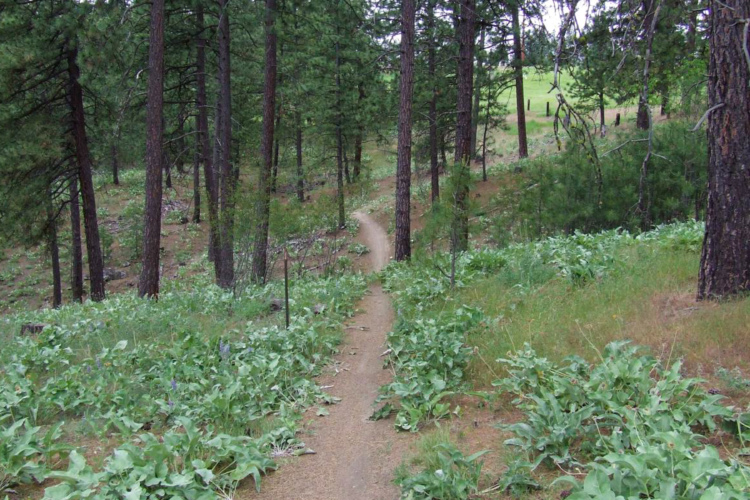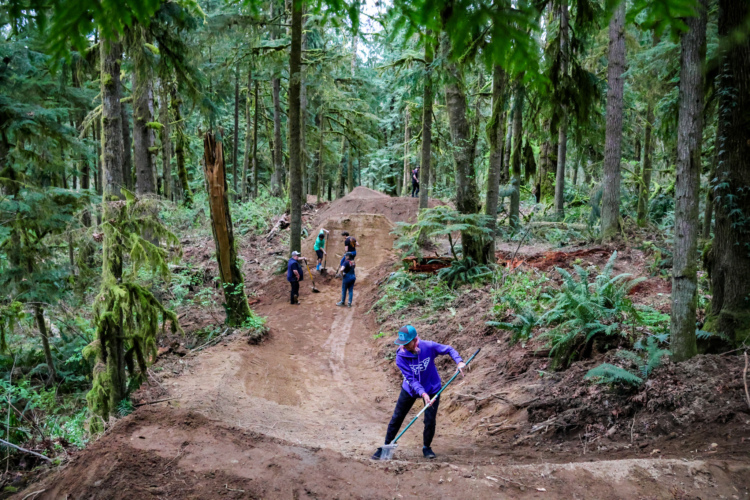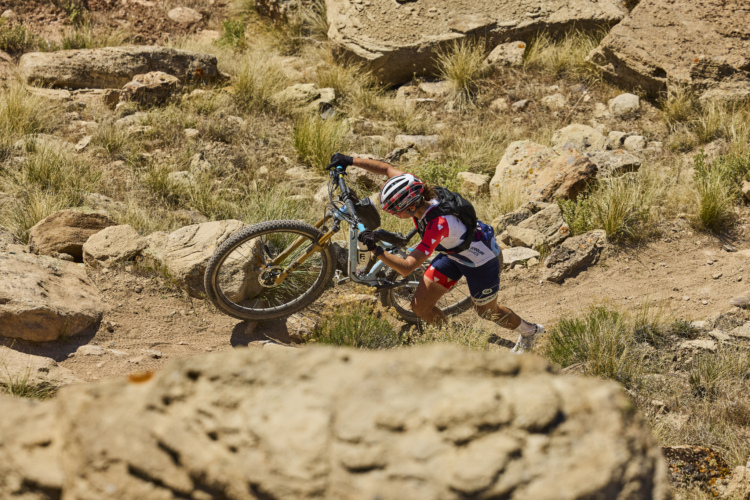
As temperatures start to rise, many mountain bikers–myself included–are dealing with a sore point: muscle cramps. While muscle cramps are fairly common and mostly benign, they can be painful and annoying to deal with during a mountain bike ride. This article will briefly discuss common causes of leg cramps, and will offer tips for preventing and dealing with cramps brought on by mountain biking.
The information in this article has been collected from various sources, including tips from our readers, MedicineNet.com, and Mayoclinic.org.
What causes leg cramps?
Most of the cramps experienced by mountain bikers are known as “true” cramps and can be tied to one or more of the following conditions.
Muscle fatigue: Mountain biking is a strenuous activity, and riders often push themselves to the limit–and beyond. Long days and big climbs can make cramps more likely, as can a lack of strength conditioning.
Dehydration: Excessive sweating or a failure to hydrate before a mountain bike ride can lead to cramping on the trail.
Low mineral levels: This is tied to dehydration and sweating, as certain minerals like sodium are depleted during a ride. In addition to sodium, it is also thought that low levels of calcium, magnesium, and/or potassium can lead to cramping as well. Low potassium is a particular muscle cramp trigger for those with weak muscles. Some claim vitamin deficiencies may be to blame for muscle cramps, especially low levels of vitamins B1, B5, and B6.
Beyond the causes of “true” cramps, there are a couple other risk factors for developing muscle cramps.
Age: Older individuals are generally more susceptible to muscle cramps.
Repetitive motion: Dystonic cramps are caused by overuse (for example, writer’s cramp) and mountain bikers can experience these types of cramps due to poor bike set-up or extremely long days in the saddle.
For me personally, I usually get the worst leg cramps when more than one of the conditions above are met. On rides when I’ve experienced multiple leg cramps, it’s usually been hot, I haven’t been drinking and/or eating enough, I’ve been in the saddle for hours, and I’m doing a lot of climbing.
How to prevent leg cramps?
There are a number of preventative measures mountain bikers can take to prevent leg muscle cramps.
Hydrate: Ensuring adequate hydration is a pretty simple way to avoid leg cramps. Be sure to hydrate before, during, and after the ride to keep body fluid levels in check. However, water alone generally isn’t enough. A simple electrolyte solution containing sodium and other minerals like potassium and magnesium is generally a good idea. However, it’s also possible to get the necessary minerals from food and even electrolyte pills if necessary.
Get your minerals: Drinking electrolytes during the ride won’t do much good if a rider is starting out at a vitamin or mineral deficit before the ride even begins. A good multi-vitamin and/or a balanced diet should provide the necessary vitamins and minerals. For those who are susceptible to leg cramps, keep an eye on sodium, calcium, magnesium, and potassium intake. For riders with low calcium levels, the real culprit may be a lack of vitamin D, which helps the body absorb calcium.
Avoid hot weather: If possible, ride early in the morning or at night during the summer. Try acclimating yourself to riding in the heat by taking things slowly and gradually building up during the season.
Get strong: Like acclimating to the heat, it’s also important to prepare muscles for difficult rides. For those who experience cramps due to fatigue, consider working up to longer or more difficult rides through conditioning and strength training.
Warm up: Diving right into a big climb with cold muscles is never a good idea. Warm up before the ride by taking a few laps around the trailhead or do like the pro racers do, and set up a trainer in the parking lot.
Stretch: Many mountain bikers neglect stretching and flexibility exercises, much to our detriment. Loose muscles are less likely to cramp, so swallow your pride and get into a stretch routine at the trailhead before heading out! That said, stretching cold muscles can cause other issues–it’s best to stretch after you’ve completed your warm up.
Use your gears: This tip is related to getting strong and avoiding fatigue. I’ve personally found that when I choose an easier gear for climbing instead of mashing a big gear, I can get more cramp-free miles out of my leg muscles.
How to deal with leg cramping?
One study says that 95% of adults will experience muscle cramps at least once during their lifetime, so getting cramps isn’t a question of if, it’s a question of when. If you do experience muscle cramps on the trail, there are some things you can do to recover your ride.
Drink fluids: Cramps caused by dehydration are pretty easy to solve: just add water. Hydrating won’t make cramps disappear immediately, but will help in the long run.
Get minerals: Many riders, including several of our readers, recommend downing a dose of salt by way of a mustard packet or pickle juice. I’ve had good results with Hammer electrolyte pills, which serve a similar purpose without the gag-inducing taste.
Some swear by bananas for eliminating in-ride cramps, and if low potassium is the culprit, bananas are a good choice. For me personally, bananas are slow to work, if they work at all.
Stretching: This is probably my go-to move whenever I get a leg cramp. It may take a moment before getting comfortable enough to stretch the muscle, but once the cramp subsides a bit, stretching will typically bring relief. At least, until the muscle cramps up again. See tips above.
Massage: Similar to stretching, massaging a cramped muscle can offer relief. Massaging the muscle is a bit more time consuming and/or painful than stretching, but for many it is a good solution.
Warm water: Most of us won’t have access to warm water during a ride when a leg cramp strikes, so save this tip for home. Cramped muscles can remain sore well after the ride is over, and warm water will help relieve some of the tension and strain.
For many riders, leg cramps are a part of life, though fortunately they don’t have to end the ride prematurely. Just take steps to avoid leg cramps and be prepared to act once they strike.
Your turn: Share and get more tips for dealing with leg cramps on our forums.












